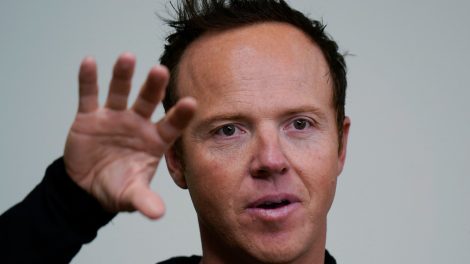Vancouver Canucks goaltender Ryan Miller will return to Buffalo Saturday to play in front of Sabres faithful for the first time since he was dealt at the 2014 NHL Trade Deadline. He’s coming back to where it all started.
“It’s a little surreal,” Miller told reporters after Canucks practice in Buffalo on Friday, courtesy NHL.com’s Joe Yerdon. “I’ve been away a lot longer than I thought.”
‘Surreal’ is a fine description, one we might apply beyond how Miller experienced returning to the First Niagara Center for practice on Friday afternoon. It’s certainly a concept we can accurately use to characterize the sometimes-baffling machinations in Vancouver’s crease over the past half-decade.
The pressure on Canucks goaltenders is immense anyway and has only increased as a result of the organization’s annual tradition of indulging in a controversial goalie trade.
In 2013 it was the shocking Cory Schneider swap, which netted the club Bo Horvat. The next year the Roberto Luongo saga finally climaxed following the Heritage Classic debacle. And this past summer, the Canucks dealt Eddie Lack to Carolina in a heavily scrutinized deal.
There were offers for Miller this off-season, as Canucks general manager Jim Benning admitted at a season ticket holder event in July. And the offers weren’t of the salary dump variety. The club could’ve made a credible hockey trade involving the 36-year-old veteran, but that course of action was never realistically on the table for Benning.
The mental rigours of being an everyday starter in the Vancouver market are part of what made Miller untouchable.
“In our market place, especially, I wanted a goalie who had the experience of being a No. 1 guy and dealing with the day-to-day pressure” Benning told Sportsnet.
“I’ve seen the transition before from a guy that’s supposed to be the next big goalie, the backup goalie, but there’s a big transition to being the No. 1 guy,” Benning continued. “You’ve got a whole lot of other expectations and things that are on your plate, that when you’re the backup, you just kind of have to fall in behind the starter.”
Beyond Miller’s desirable veteran poise, Benning’s perspective on the central importance of leaning on a veteran No. 1 starter, while building a succession plan behind him, was informed by his time with the Sabres organization.
“I was in Buffalo when we had Dominik Hasek and I think that’s where I learned my strategy with goalies,” Benning said. “We had Hasek, who for three or four years there was the MVP of the league. And back then we were considered a small market team. We had to draft well and develop our players and that’s how we had to build our teams to win.
“As a precursor to that, goaltending is your most important position. If you have good goaltending you can be competitive in every game you play – especially when you have young players and are developing them,” Benning continued. “So I look back at the model. We had Hasek and then we drafted (Marty) Biron and there was a succession plan. We drafted Miller, and then when we moved Hasek on, Biron took over and he was the No. 1 goalie and Miller came in after him.”
That Benning cut his teeth with an NHL team that employed Hasek, the most dominant goaltender in NHL history, it shaped his approach to goaltending. It’s a perspective that was cemented when Benning won a Stanley Cup as an assistant general manager with the Boston Bruins, who leaned heavily on Tim Thomas and his ridiculous .940 save percentage during the 2011 playoffs.
It’s this experience that helps explain why retaining a sturdy, reliable veteran like Miller was a must for Benning. It’s why the Canucks’ general manager used a high draft pick to select Thatcher Demko at the 2014 NHL Entry Draft. It’s why he has high hopes for Jacob Markstrom, who remains unproven at the NHL level.
“Goaltending, I believe, is the most important position on the team,” Benning said. “It’s like pitching in baseball or a quarterback in football.
“A goaltender has the ability to give your team confidence and make your team better than it actually is. The other side of that is if you don’t have good goaltending, it has the ability to take confidence away from your team.
“Ryan got off to a good start and we hope he can keep it going.”
WATCH THE CANUCKS VS. SABRES SATURDAY AT 1:00 ET ON SPORTSNET
So far Miller’s performance has justified the organization’s confidence. The 36-year-old netminder has appeared in every game but one for a surprisingly young club, and is sporting a hearty .923 save percentage.
Miller leads all NHL goaltenders in minutes played and shots faced and his performance has been stellar. His play is arguably the single biggest reason the club has exceeded expectations in the first month of the season.
“I feel good. I’ve always been a late bloomer so, maybe I’ll get it figured out in my mid-30s,” Miller joked on Friday.
“My mental approach is just that I’ve seen a lot of ups and downs, and I’ve seen a lot of things. I don’t put a lot of stock into things other than that I want to be out there and compete and make some saves. I want to get back to the approach that got me into the league; taking it back to some real basic stuff, and have some fun, as much as possible.”
That veteran approach is something the Canucks have valued in Miller, and something that has translated well on the ice in the early going. And off of the ice, it may lend the Canucks some much-needed stability in net.









